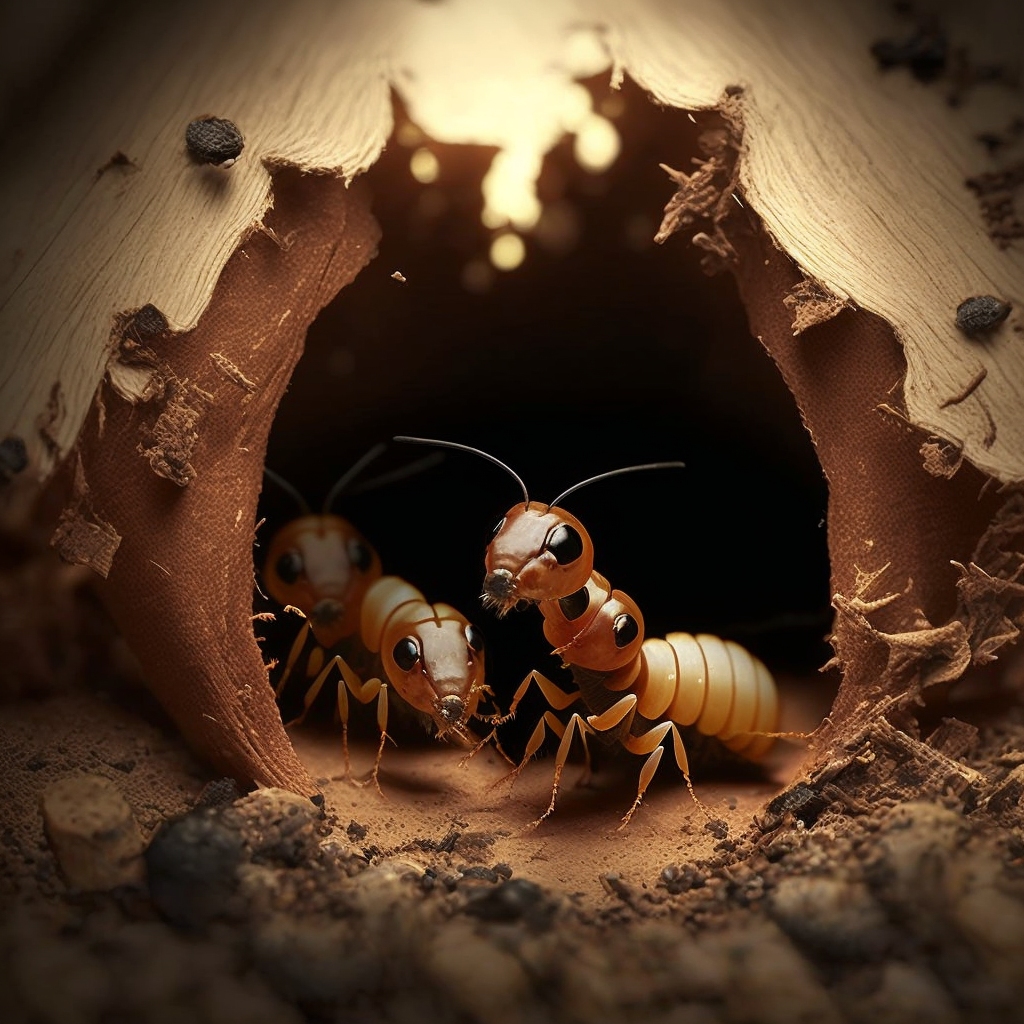Can Termites Fly?

Some termites can fly, but not all of them.
During their reproductive stage, different kinds of termites can fly, but only one caste of termites has wings.
Because they fly in groups, these winged termites are called “alates” or “swarmers.”
These termites with wings can only fly short distances and at certain times of the year.
When the termites with wings get to the ground, they drop their wings.
What do Winged Termites Look Like?

Termites that can fly are usually a light gold color and have six legs. They have two tiny antennae that are usually straight with a slight curve.
Their thick, one-piece bodies are usually a good way to tell them apart. They have two large, clear wings on either side of their bodies. Each wing can be up to 3 centimeters long and looks like it has many veins.
There are flying termites all over the united states. Termite colonies like to live in warm places, where the average temperature is between 25 and 28 degrees.
As summer approaches, the tropical rains are the perfect place for termites to live and grow.
There are three groups in a termite colony. The subterranean termite is the only type of that species that can grow wings and fly.
At the hottest time of the day, when the sun is at its highest, millions of termites will fly out of their colony.
People often think that termites are pests that live underground, but all subterranean termites fly out of the colony. At that point, the vast majority of termites who don’t become kings and queens lose their wings and become workers or soldiers.
A swarm of termites flying toward your house could land all at once, with up to 50,000 of them.
However, only about 10% of those termites will be able to find a mate and start a new colony.
Does Having Flying Termites Mean you have Termites?
No, not always. Termites are easy for the wind to move. A single termite outside a door or window doesn’t always mean that you have a problem with termites.
If you see swarmers, it means that either a colony has grown up after living in your walls for a while, or this new group of swarmers wants to set up shop in or near your home.
In either case, termites have probably been in the area for a long time. You should have your home checked to reduce the risk of damage from termites.
Winged Termites vs Winged Ants

People often confuse flying termites with flying ants. At first glance, they look similar in size, shape, and color, but there are some important differences to look out for.
The wings are the main difference between a flying termite and an ant. The termite’s four wings are all the same length and width, while the top two wings of a flying ant are usually twice as big as the bottom two.
The antennae of an ant are bent at a 90-degree angle, while the antennae of a flying termite are straight with a very small bend at the end.
Ants are darker than termites, whose wings are usually a light beige or golden color and have a lot of veins.
The body of a flying termite is about 2-3 millimeters bigger than that of a flying ant. Termites have only two parts: the head and the body. Ants, on the other hand, have three parts: the head, the body, and the tail.
How are Flying Termites Treated?
The flying subterranean termite is hard to get rid of, so the best way to deal with it is to try to stop it from getting in.
Having a termite system and a protection barrier around your house will help stop termites from digging into the ground and making a colony.
The best way to protect your home from winged termites is to keep it in good shape. This means making sure your home has good storage, ventilation, and drainage.
Most importantly, you should have a professional check your home for termites every year.
If anything, seeing flying termites can be helpful because it can show that there may be a Termite problem present. Keep an eye out, and when you see signs, make sure to read them.
How can I Defend Against Termites with Wings?
Even though you can’t stop flying subterranean termites from swarming onto your property, there are some things you can do to make it less likely that one will fly into your house.
It’s important to always be aware of how much moisture is in your home and to do what you can to get rid of it.
Termites love wet and damp places to live, and it’s very common for homeowners to find termite problems when they’ve had plumbing problems like bathroom leaks or when their homes are built on steep blocks next to high moisture areas.
Keeping the house clean and making sure it is well taken care of all help fight off termite infestations.
Get rid of any possible points of entry: Fill in any holes or cracks in your home’s wooden foundation.
Try to keep mulch and other possible food sources at least a few feet away from the foundation of your home.
Also, there are many bugs that do look like flying Termites so make sure you are not mistaken about the Termite situation in the first place.



